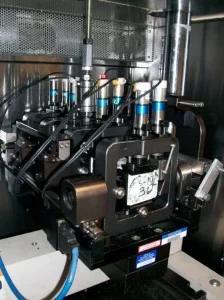The Problem with Guaranteed Maximum Price for Materials Testing and Inspection


Those who seek to erect structures of all types (commercial, residential, institutional, infrastructure) have a clear motivation to minimize costs for the structure and to be able to budget accurately for those costs. Given these facts, it’s understandable that clients and potential clients are attracted to guaranteed maximum price (GMP), lump sum, or fixed fee contracts for materials testing and inspection. I’ve heard it said that that makes sure that the selected firm has “skin in the game.”
Usually, though, the phrase “skin in the game” refers to risking money or other assets as an investment with the prospect of proportional gains if the project meets its pro forma performance. But, in my experience, this is not the ask of the client. Rather, the client asks that the consultant firm absorb all the risk of exceeding the budget with no potential for reward for coming in under budget.
Further, almost all factors affecting excess costs absorbed by the consultant are beyond their control. These include:
- Failure to meet the construction schedule
- Changes in the requirements of the authority having jurisdiction (AHJ)
- Project logistics as executed by the contractor (who will never prosecute a project with the goal of controlling materials testing and inspection costs)
So, in asking for such a contract, the client is asking the consultant to undertake all the risk with very little ability to control the outcome. Clearly, this is not a viable position for a provider of services whose costs depend strictly on units (both of time and of tests).
In principle, a lump sum contract could provide the incentive of reward for efficient execution. Say there is a lump sum contract for $500,000 and that that number was arrived at by the consultant estimating hours and quantities, totaling the costs, and adding some profit. Now, if the consultant firm can execute the contract using less hours and quantities, it can profit above what was used at arriving at the contract price. But the consultant firm takes the risk that the factors noted above result in more hours or quantities cause its profits to be reduced or even eliminated. And again, the consultant has little or no control over these factors.
A GMP is even worse for the consultant. In this type of contract, the client will pay agreed upon rates for hours and quantities up to the maximum price. If the consultant is efficient and manages to utilize fewer hours or quantities, the client reaps the reward. Should the above noted factors lead to more hours or quantities, the consultant suffers the penalties. Clearly, unless outsize profitability is built into the rates, the consultant is ill-advised to agree to such a contract. And if outsize profitability is built into the rates, it’s the client who pays.
In the end, due to the nature of the role of a materials testing and inspection firm and the way that projects are executed, a time and materials contract with a “not to exceed without authorization, such authorization not to be unreasonably withheld” clause is the best way to protect the interest of both the client and the consultant and to assure that contentious situations are avoided.



